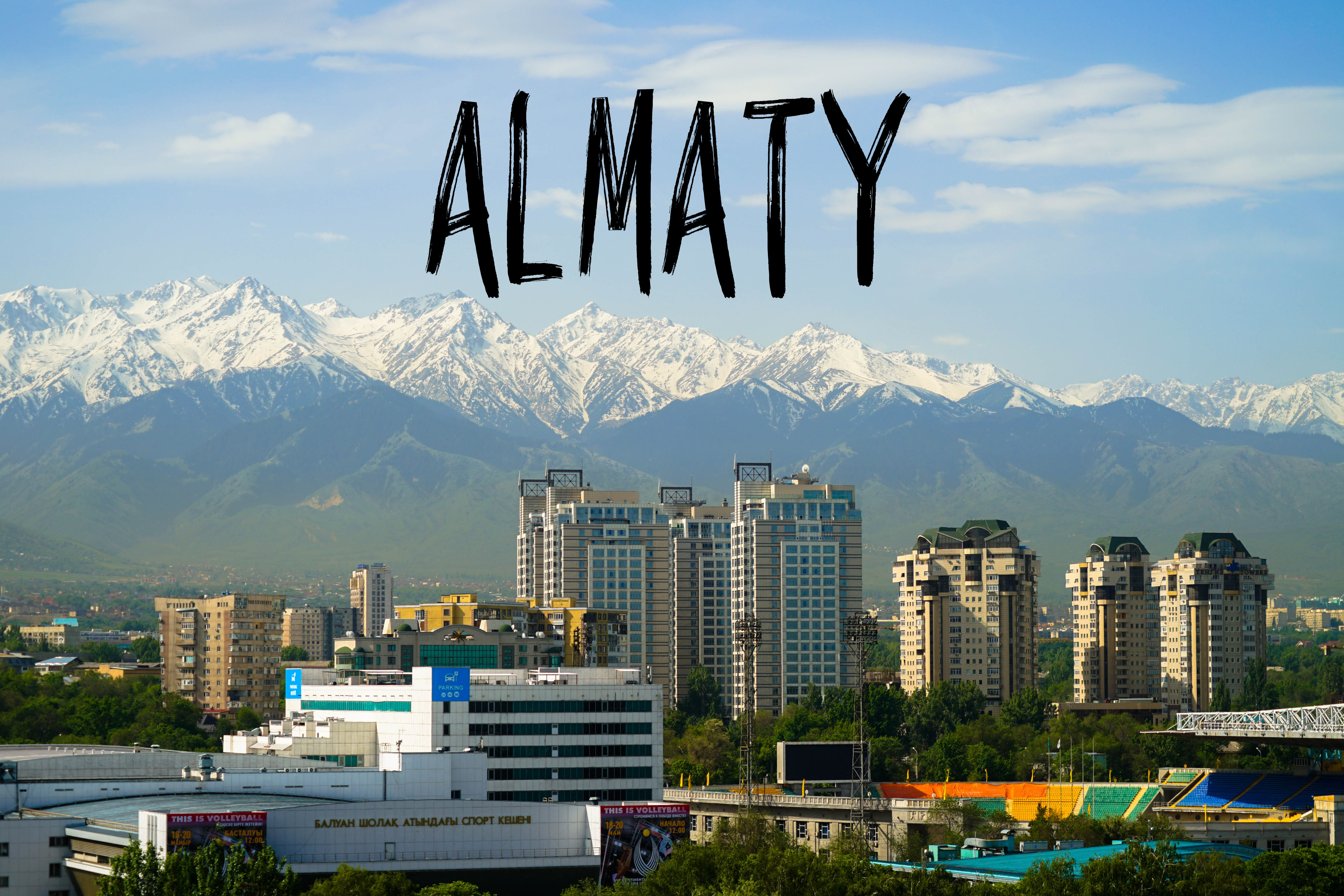The Charm of Almaty
Almaty has an exotic charm that draws people in while keeping some mysteries hidden just below the surface. As the largest city in Kazakhstan, it offers an intriguing mix of cultures and landscapes. While not always open and transparent, exploring Almaty with patience and an open mind allows one to discover its unique blend of the past and present.
An Unexpected Melting Pot
Almaty brings together influences from Kazakh, Russian, and Soviet history. Traces of each remain visible in the architecture, street layouts, and mindsets of residents. Having spent 25 years there myself, I witnessed how this dynamic shapes both the tangible and intangible aspects of life in the city. Under the surface, remnants of Soviet architecture and mentality mix with Kazakh traditions and a growing globalized youth culture.

Natural Beauty Within Reach
Perhaps the most spectacular aspect of Almaty is its proximity to the breathtaking Tian Shan mountains. On clear days, their snow-capped peaks seem close enough to touch. With some effort, one can reach true wilderness within a half hour drive. The Medeo skating rink and surrounding hiking trails offer a taste of nature’s majesty while still feeling part of the urban fabric. Winter sports like skiing and snowboarding draw locals and visitors to enjoy the mountains’ snowy slopes.
Exploring Almaty’s Layered Culture
Traces of the Past
Vestiges of the Soviet era can be found in unexpected places. Public transportation, though expanding, still reflects a time when cars were scarce. The metro efficiently connects neighborhoods but saw little renovation since construction. Wider streets betray their original purpose of parading military vehicles. Ruins of the 1936-37 anti-religious movement remain scattered throughout the country.
Blending Traditions
Despite a majority Muslim population, Kazakh culture embraces a blend of faiths. Most women do not strictly follow religious dress codes or daily prayers. Locals take pride in their ethnicity yet freely incorporate Russian dishes and global influences. Holidays fuse Soviet commemorations with pre-Islamic traditions. This tolerant approach to diversity gives Almaty a progressive spirit compared to more conservative Islamic societies.
Growing Urban Sophistication
As Kazakhstan modernizes, Almaty reflects positive changes. International cuisine, contemporary art, and live music scenes enrich the city. Young professionals pursue careers rather than early marriage. Women’s increasing social roles challenge patriarchal norms. New buildings meld sleek designs with Kazakh motifs. While remnants of the past persist, Almaty’s dynamism suggests an optimistic future focused on innovation and progress.
Understanding Daily Life in Almaty
Transportation Dependency
Almaty’s car-centric infrastructure stems partly from Soviet priorities and oil wealth. Wide boulevards pack with luxury vehicles, from SUVs to sports cars, competing for space in the dense downtown. Overreliance on private transport contributes to traffic and pollution. However, improvements like bicycle paths and the convenient metro offer cleaner alternatives for commuters.
Appreciating Simplicities
Daily rhythms maintain certain familiarities. Neighborhood bakers and butchers sell freshly made staples, while cafes serve cherished tea and pastries. Parks bustle with friends and families. Weekend outdoor activities continue year-round thanks to hearty cuisine like horse milk, kebabs, and bold red wines. Simple pleasures give respite from professional obligations and urban busyness.
Embracing Multicultural Interaction
International visitors flock not just to landmarks but local haunts. Locals welcome foreigners into their homes and social circles. Multilingual residents gladly share insider knowledge to enhance cultural immersion. Festivals and community groups provide platforms for cross-cultural exchange. Inquisitive travelers who invest time in genuine human connections experience Almaty beyond surface impressions.
Understanding Almaty’s Spirit Through Its People
Striving for Balance
The complexity of weaving tradition into modern aspirations appears in everyday behaviors and values. Women aim to pursue education while upholding familial roles. Locals celebrate both Islamic holidays and Soviet commemorations. Patriotism embraces ethnic pride with global perspectives. This negotiation of past and future makes Almaty simultaneously familiar and surprising to visitors.
Warmth of Community
Residents show care for neighbors and extended family. Strangers readily converse to build friendly acquaintances into lasting rapport. Community figures offer guidance and assistance without charge. Online groups connect communities of interests for mutual learning. This sociability invites outsiders into an emotional experience of place rather than just its physical attributes.
Appreciating Natural Beauty
Mountains possess almost sacred significance, granting perspective and restoration from urban demands. Locals hike, ski, and relax outdoors year-round. Photography shares the Tian Shan’s magnificence worldwide on digital forums. Preserving nature engages environmental volunteers. Through such appreciation of the physical landscape, inhabitants connect to Almaty on deep spiritual and cultural levels.
Conclusion
Almaty rewards the traveler who makes an effort to understand its multi-dimensional culture rather than pass surface judgement. Beneath metropolitan dynamism lies a balance of tradition and progress shaped by the city’s vibrant, welcoming people and spectacular natural setting. While mysterious on the surface, investing curiosity and open-mindedness uncovers Almaty’s harmonious blend of histories and its residents’ enduring appreciation for community, nature, and cultural synergy. Visitors who take the time to experience everyday life here discover a place of complexity, charm, and spiritual respite from urban busyness.

 Coronavirus Outbreak: What Travellers Need to Know
Coronavirus Outbreak: What Travellers Need to Know